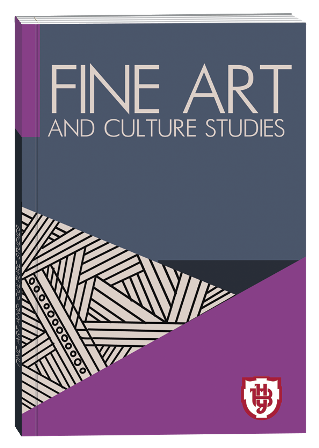MUSICAL RHYTHM: CONCEPTUALITY OF TEACHING METHODS
DOI:
https://doi.org/10.32782/facs-2022-4-12Keywords:
musical art, metrorhythm, methodica, professional education, binary, ternary form, temporal image, drive.Abstract
The article is devoted to the consideration of methods of studying musical rhythm in the context of professional music education. An analysis of quasi-scientific materials, which affect negatively the process of formation of aspiring musicians, was carried out. In particular, it refers to the imitation of the educational process with unjustified replacement of concepts regarding the study of schemes for the temporal division of note durations in rhythmic progression and their replacement with material objects, measuring devices or products (ruler, apple, cake, etc.), which lead to negative learning results and deformation ideas about musical time. Approaches that demonstrate the simplification of the metrorhythmic component of modern musical trends without taking into account genre and stylistic culture are considered; common mistakes in the interpretation of rhythmic models in the music-theoretical aspect and their connection with musical terminology. The issue of "standardization" of musical time with the use of a metronome is raised separately, as a result of which the student’s will is completely subjugated to the click, which develops the phobia of a concert performer who plays music without a metronome. Work with a metronome should be designed so that the effectiveness of professional growth is ensured by a creative approach based on the process of technological activation, the inclusion of consciousness in the feeling of the flow of musical time, and not the idealization of an auxiliary device (metronome) as a "guide" of rhythm. The article proposes to expand the essence of musical metro rhythm in its philosophical meaning (the concept of "binary" and "ternary"), referring to the researches of specialists of the 20th century (B. Asaf’ev, M. Kharlap, V. Kholopova), as well as innovative metrorhythmic methods through inclusion of motor and emotional activity of the performer (S. Makievsky). The modern educational process needs to revise the archaic methods of studying musical rhythm. The possibility of such an update in the educational process will occur only through the introduction of the concept of a metaphorical "silent" rhythm and intonation image, its presence in relationship with emotions and creative motivation, which will certainly lead to the enrichment of the musician’s performance skills.
References
Асафьев Б. Музыкальная форма как процесс. Ленинград : Музыка, 1971. 374 с.
Макиевский С. Ритмика для всех. Киев : Музична Україна, 2005. 104 с.
Макиевский С. Swing-практикум. Ритмоинтонация. Компинг. Киев : 7БЦ, 2022. 64 с.
Мурза. С.А. Диригентський жест як інструментально-виконавський феномен: компаративно-технологічний підхід: дис. … канд. мистецтвознавства: 17.00.03. Одеса, 2021. 196 с.
Самая Т., Макієвський С. Ритміка вокаліста. Професійний курс. Київ : 7БЦ, 2021. 60 с.
Самая Т. Вокальне мистецтво естради: український контекст. Київ : Четверта хвиля, 2019. 152 с.
Самая Т.В. До проблематики формування метроритму у фаховій музичній освіті / Управління якістю науково-дослідницької діяльності у закладах вищої та фахової передвищої освіти в умовах воєнних реалій : матеріали всеукраїнського науково-педагогічного підвищення кваліфікації, 10 травня – 21 червня 2022 року. Одеса : Видавничий дім «Гельветика», 2022. С. 226-229.
Самая Т. Драйв як складова виконавського процесу сучасного вокаліста // Сценічне та музичне мистецтво: циркові та естрадні жанри. Науково-методичний аспект: зб. матеріалів ХІ наук.-практ. конф. Київ : КМАЕЦМ, 2021. С. 51-55.
Самая Т. В. Метроном як перешкода у вихованні музичного ритму / International scientific innovations in human life. Proceedings of the 6th International scientific and practical conference. Cognum Publishing House. Manchester, United Kingdom. 2021. P. 401-407.
Самая Т.В. Особливості музичного метроритму в естрадному вокальному виконавстві / АРТ-платФОРМА: наук. альм. Київ : КМАЕЦМ, 2020. Вип. 2. С. 366-385.
Сарджент У. Джаз: Генезис. Музыкальный язык. Эстетика. Москва : Музыка, 1987. 296 с.
Харлап М. Тактовая система музыкальной ритмики. URL: https: //www.gumer.info/bibliotek_Buks/Culture/ Article/harl_takt.php (дата звернення 07.09.2022)







